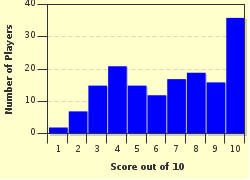Quiz Answer Key and Fun Facts
1. René Descartes was a very famous French philosopher. His works are extremely significant in modern philosophy. He was very popular during his time, but exactly when was his time? Which of these answers contains the correct dates of his birth and death?
2. One of Descartes' ideas is considered one of the most important in philosophical history. It involved attaining complete certainty and is known as the "cogito". What is the summary of the argument popularly known as to the English speaking world?
3. Descartes spent the last seven years of his life teaching and engaging in philosophical correspondence with a princess. He even dedicated his "Principia philosophiae" to her. Who was she?
4. Descartes is well known for contributions to philosophy, but he was also a prominent mathematician. Which of the following systems did he develop?
5. Descartes was considered an important figure in the philosophical school of Rationalism.
6. Which of the following is something which has been named after Descartes?
7. There is a scientific experiment named after Descartes which is popular in schools as it is a safe, fun way to demonstrate principles of buoyancy and the ideal gas law. Which of these is the name used to describe the experiment?
8. Descartes and a servant girl named Helene conceived a baby girl who was born in 1635. What was the name of their daughter?
9. Here is a quote from Descartes. I have removed the part, what are the missing words? - "____ is mankind's most equitably divided endowment."
10. Descartes died in Sweden, but what disease is believed to have been the cause?
Source: Author
I-Am-A-Car
This quiz was reviewed by FunTrivia editor
bloomsby before going online.
Any errors found in FunTrivia content are routinely corrected through our feedback system.

